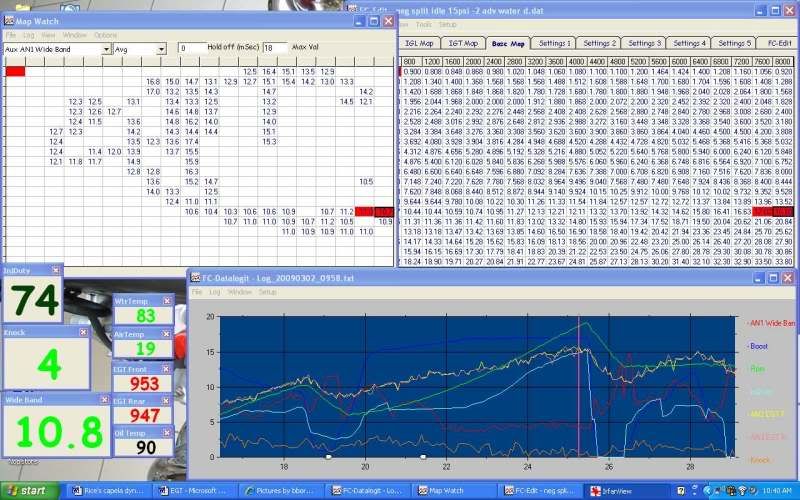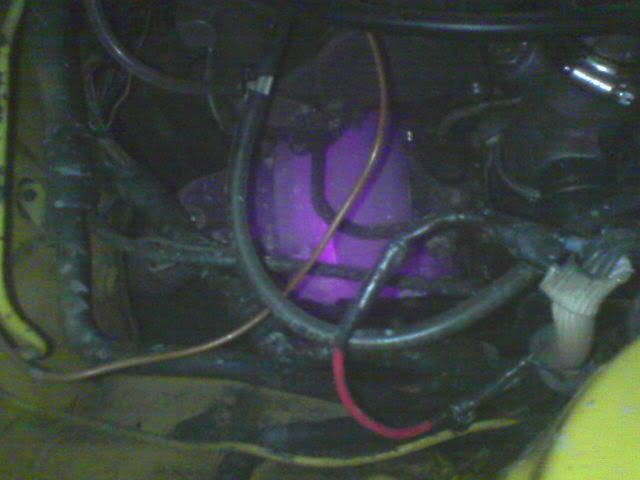|
|||||||
| Rotary Tech - General Rotary Engine related tech section.. Tech section for general Rotary Engine... This includes, building 12As, 13Bs, 20Bs, Renesis, etc... |
 |
|
|
Thread Tools | Display Modes |
|
|||||||
| Rotary Tech - General Rotary Engine related tech section.. Tech section for general Rotary Engine... This includes, building 12As, 13Bs, 20Bs, Renesis, etc... |
 |
|
|
Thread Tools | Display Modes |
|
|
#1 |
|
frustrated!
Join Date: Apr 2009
Location: Montana
Posts: 611
Rep Power: 17  |
EGT temperature ranges??
I just purchased two EGT probes and gauges for my new set-up. I am curious to what some of the "Average" EGT's our produced by turbo rotaries?
Basically I am looking for a common: good/bad/stable temp ranges. Kind of vague but thanks.
__________________
Same pig, new soul 
|
|
|

|
|
|
#2 |
|
RCC Addict
Join Date: Mar 2008
Location: Honolulu, Hawaii USA
Posts: 1,813
Rep Power: 19  |
|
|
|

|
|
|
#3 |
|
frustrated!
Join Date: Apr 2009
Location: Montana
Posts: 611
Rep Power: 17  |
Thanks Ted.
Does sensor position matter in regards to being up or down due to possible contamients(sort of like a wideband)?
__________________
Same pig, new soul 
Last edited by FC3S Murray; 08-07-2009 at 06:56 PM. |
|
|

|
|
|
#4 |
|
RCC Addict
Join Date: Mar 2008
Location: Honolulu, Hawaii USA
Posts: 1,813
Rep Power: 19  |
No, since it's most likely a shielded thermocouple.
The only thing that'll damage it is debris - if you have crap flying in the exhaust, there's other things that you should worry about instead of the probe being damaged. 
|
|
|

|
|
|
#5 |
|
frustrated!
Join Date: Apr 2009
Location: Montana
Posts: 611
Rep Power: 17  |
haha, good point. I was thinking along the lines of moisture buildup, ect. Since it is shielded then never mind. Thanks again.
__________________
Same pig, new soul 
|
|
|

|
|
|
#6 |
|
Rotary Fanatic
Join Date: Feb 2008
Location: Slidell, LA
Posts: 191
Rep Power: 18  |
Mine just keep on rising. Up to almost 1000 deg C at 8000 rpm on some runs.
Barry 
|
|
|

|
|
|
#7 |
|
The quest for more torque
Join Date: Sep 2008
Location: Sheboygan, Wisconsin
Posts: 855
Rep Power: 18  |
If you were running NA, I would recommend more ignition timing.
Is this pre-turbo or post-turbo?
__________________
1986 GXL ('87 4-port NA - Haltech E8, LS2 Coils. Defined Autoworks Headers, Dual 2.5" Exhaust (Dual Superflow, dBX mufflers) 1991 Coupe (KYB AGX Shocks, Eibach lowering springs, RB exhaust, Stock and Automatic) |
|
|

|
|
|
#8 | |
|
Rotary Fanatic
Join Date: Feb 2008
Location: Slidell, LA
Posts: 191
Rep Power: 18  |
Quote:
Barry
__________________
GOD the Incomprehensible Obvious (www.frksj.org) |
|
|
|

|
|
|
#9 |
|
The quest for more torque
Join Date: Sep 2008
Location: Sheboygan, Wisconsin
Posts: 855
Rep Power: 18  |
1000 C pre-turbo is not abnormally high for any turbo engine at 17 psi boost, I actually would have expected higher (there are diesels making more than that).
(The continuous temperature increase is probably from several factors, heating of the rotor/housing surface, increased turbine back pressure, and less time to burn the fuel in the chamber at higher revs.)
__________________
1986 GXL ('87 4-port NA - Haltech E8, LS2 Coils. Defined Autoworks Headers, Dual 2.5" Exhaust (Dual Superflow, dBX mufflers) 1991 Coupe (KYB AGX Shocks, Eibach lowering springs, RB exhaust, Stock and Automatic) |
|
|

|
|
|
#10 |
|
Respecognize!
Join Date: Jul 2008
Location: Δx = ħ/2Δp
Posts: 3,190
Rep Power: 21  |
just thought i would toss this out there

__________________
For current updates and event coverage check out Follow on Twitter! @WhizbangRally Whizbang Rally's Webpage | Facebook |
|
|

|
|
|
#11 | |
|
Rotary Fan in Training
Join Date: Jul 2008
Location: Under my car
Posts: 99
Rep Power: 18  |
Quote:
First, it is correct that the EGT numbers are meaningless without finding mean best torque on your particular motor first. This will give you an idea of what the EGTs should be under ideal conditions and full load. After that, the relationship between timing and EGT and AFR and EGT gets cloudy. Advancing the timing will only lower EGTs if the actual combustion event is already late (i.e. - peak pressure happening after 20° ATDC or so). If the peak pressure is early (detonation, which may NOT be audible), advancing the timing will makg the EGTs go up. If you have found the MBT AFR reading, making the mix leaner will raise the EGTs to a point, but then they will start to go down again once you start to lean misfire (which may NOT be audible or even noticible in normal driving). Making the mix richer may lower EGTs, but only to a point. Once you start to get rich misfires, the EGT will start to climb quite suddenly and any fuel that doesn't meet O2 in the combustion chamber might cause manifold combustion which will do CARAZY things to the EGT (up, down, fluctuating, who knows). All that said, 1800°F - 2000°F right at the ports on a boosted rotary application is not too unusual. |
|
|
|

|
|
|
#12 |
|
RCC Addict
Join Date: Mar 2008
Location: Honolulu, Hawaii USA
Posts: 1,813
Rep Power: 19  |
Brandon?
"Mean Best Torque" is easy enough to figure out - i.e. dyno. How you figure "peak pressure'? I assume you're talking about BMEP... This kinda merasuring / monitoring is above what most of us can attain. We're talking big range pressure transducers plumbed into the engine - do you really wanna drill holes into your engine??? I don't see how my page is "incorrect or misleading"? What I wrote general supports what you just said? -Ted |
|
|

|
|
|
#13 | ||
|
The quest for more torque
Join Date: Sep 2008
Location: Sheboygan, Wisconsin
Posts: 855
Rep Power: 18  |
Quote:
Peak torque is found where the peak chamber pressure is attained at ~12 degrees ATDC. This is a function of fueling and ignition timing at a specific engine speed. Most EGT writeups mention peak torque (ignition timing wise) as being the low point in the EGT map. This is primarily true (with a few far-reaching exceptions). As you said, peak torque timing is obtainable on a dyno. However, most people who tune using EGT are doing so because they are not tuning on a dyno. Also, many people do not have enough nerve to advance the timing until power starts falling off so they don't know if they actually found the peak of the curve. As to your writeup, I think this is what he takes exception to: Quote:
With a turbocharger, the time when the EGTs start to rise is the point where all the fuel is being burned. This will be significantly rich of peak power. The unburnt fuel cools the combustion charge as it absorbs some of the combustion heat to vaporize. Very few people tune turbocharged engines to run lean enough to make peak power on the dyno (13.0-13.5:1). I have not found any information on the rich side (rich misfiring) in any books. Your explanation makes good sense (as long as there is additional oxygen in the exhaust that allows combustion to occur). I think your write-up is very good, it explains the variability of the sensors very well, gives good base ranges, discribes sensor behavior accurately and contains no mis-information that would cause someone to destroy an engine. There are several awesome books that address EGT ranges and behaviors on engines. Most of what I put above comes from the Bosch automotive handbook, but I read almost identical information in "Automotive engines and Air pollution". Your numbers and ranges are correct, but the explanations for the observed behavior are confusing and possible mis-informed. I am probably a little to strict about data accuracy, as the write-up would not cause harm as it is. Many thanks for providing the resources.
__________________
1986 GXL ('87 4-port NA - Haltech E8, LS2 Coils. Defined Autoworks Headers, Dual 2.5" Exhaust (Dual Superflow, dBX mufflers) 1991 Coupe (KYB AGX Shocks, Eibach lowering springs, RB exhaust, Stock and Automatic) |
||
|
|

|
 |
| Bookmarks |
|
|